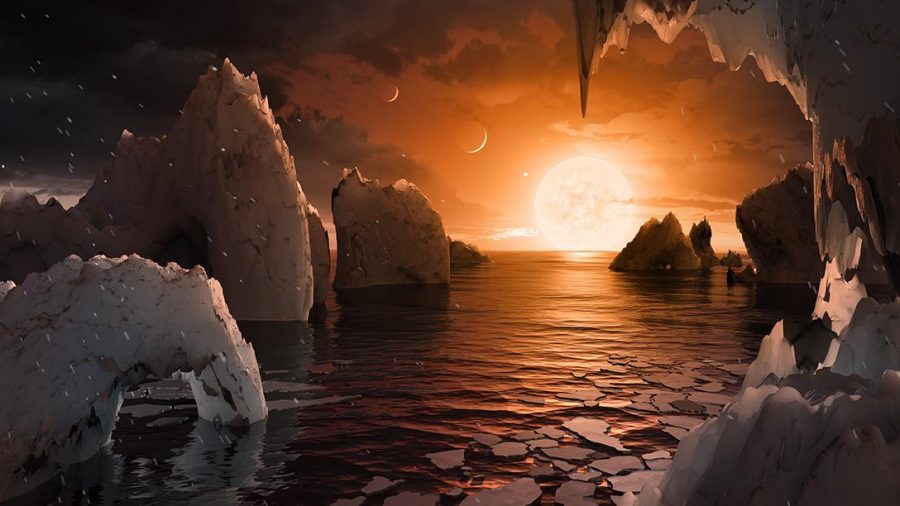If you haven’t heard yet, NASA has just made one of its biggest discoveries. Announced on Wednesday of this week, the world was told that a new solar system was discovered at a distance of 40 light years, or 235 trillion miles, from Earth. You might be thinking “What’s the big deal? We live in a galaxy filled with millions upon millions of solar systems.” Well, this particular system is very unique.
As we know, there are no planets in our own solar system that can sustain life. The topic Mars sustaining life has been very controversial on this subject being that it may have once sustained life, but is currently desolate. That being said, the search for a habitable system and planet has been a very long, strenuous journey. It may not be over, but NASA may have just inched closer to finding a sustainable planet.
At about 11:45 CT, NASA announced that not one, not two, but seven Earth-size planets have been found orbiting a dwarf star, otherwise known as Trappist-1. The most significant fact about this discovery is that three of these planets are in what astronomers and astro physicists call the “Goldilocks Zone” or “Habitable Zone”. This means that these planets are in an orbit not too close, but not too far from their sun. Earth shares this same characteristic with these neighboring planets. With these orbits, water can be sustained, a healthy atmosphere, and even life can remain a possibility. “For the first time ever, we don’t have to speculate. We just have to wait and then make very careful observations and see what is in the atmospheres of the Trappist planets,” says astronomer at the Massachusetts Institute of Technology Sara Seager, according to The New York Times.
However, as exciting as this massive, astronomical finding is, this solar system is 40 light years away. Our nearest neighboring star is Alpha Centauri, located only 4 light years away. That may seem like a small distance, but in reality and with our current JPL (Jet Propulsion Lab) technology, it would take over 100,000 years to travel to it. Multiply that by 10, and that is how far away we are from these possible life containing planets.
For those who contemplated life beyond our planet or think that we are alone in the universe, this finding may prove them wrong. Even though we do not have the current technology to confirm life on these planets, one of them holds a high potential for the existence of water, one of the keys to life. We may not arrive there in our lifetime, yet this opens doors to everyone’s imagination about what else may lay in the reaches out the universe.














I.M.Kornholio • May 4, 2017 at 10:21 pm
So does this new solar system have a Facebook page? If not, then it hardly matters that it’s 40 light years away. I mean who cares if the inhabitants are cute and furry or if they are a life form that consists solely of nitrogen and trumpium? Get on FB or stay in the outter reaches of the tardosphere!